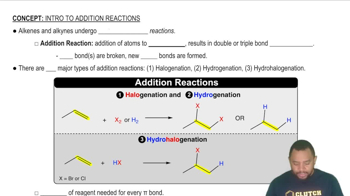Textbook Question
(a) Draw Lewis structures for chloromethane 1CH3Cl2, chloroethene 1C2H3Cl2, and chloroethyne 1C2HCl2. Draw Lewis structures for chloroethene 1C2H3Cl2.
407
views
 Brown 14th Edition
Brown 14th Edition Ch.24 - The Chemistry of Life: Organic and Biological Chemistry
Ch.24 - The Chemistry of Life: Organic and Biological Chemistry Problem 40
Problem 40



(a) Draw Lewis structures for chloromethane 1CH3Cl2, chloroethene 1C2H3Cl2, and chloroethyne 1C2HCl2. Draw Lewis structures for chloroethene 1C2H3Cl2.
(a) Draw Lewis structures for chloromethane 1CH3Cl2, chloroethene 1C2H3Cl2, and chloroethyne 1C2HCl2. Draw Lewis structures for chloroethyne 1C2HCl2.
Give the name or condensed structural formula, as appropriate (e)
Draw the condensed structure of the compounds formed by condensation reactions between
a. benzoic acid and ethanol
Name the compound in each case.
Draw the condensed structure of the compounds formed by condensation reactions between
c. acetic acid and phenol.
Name the compound in each case.